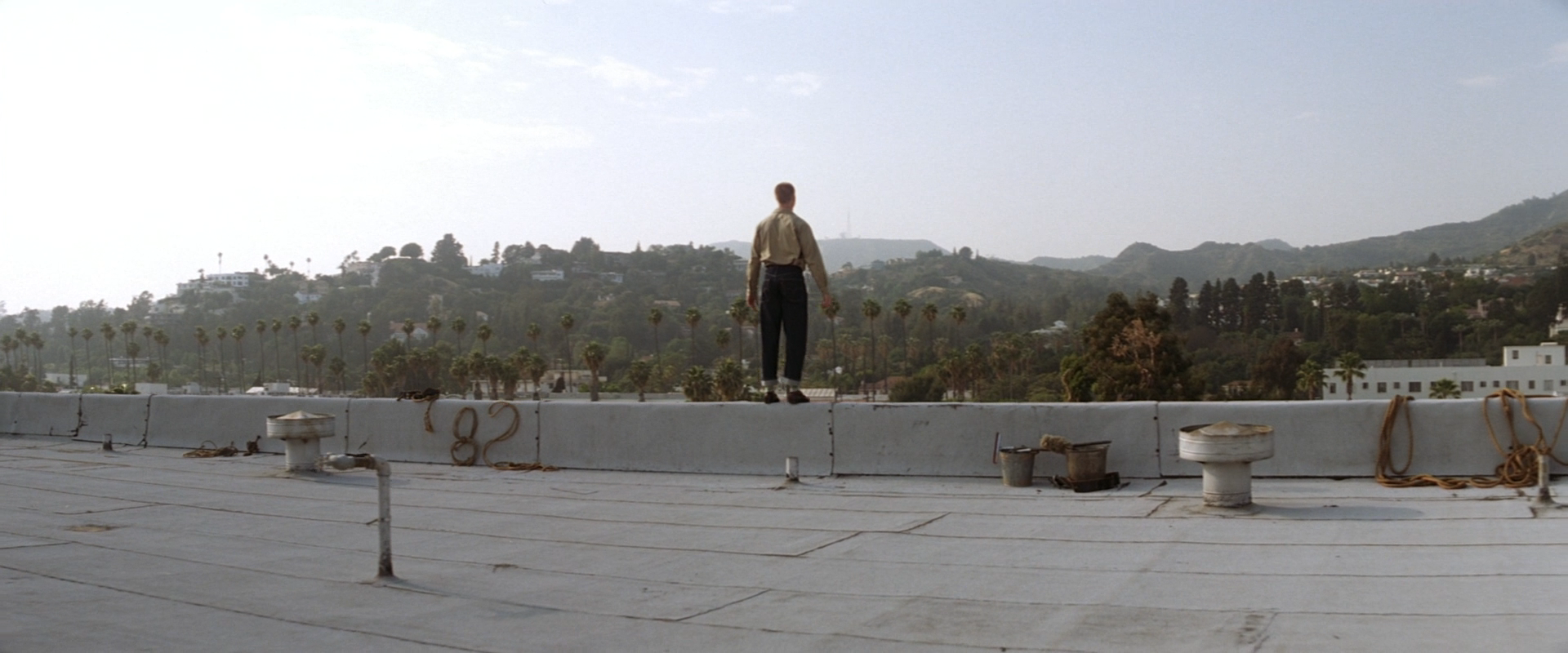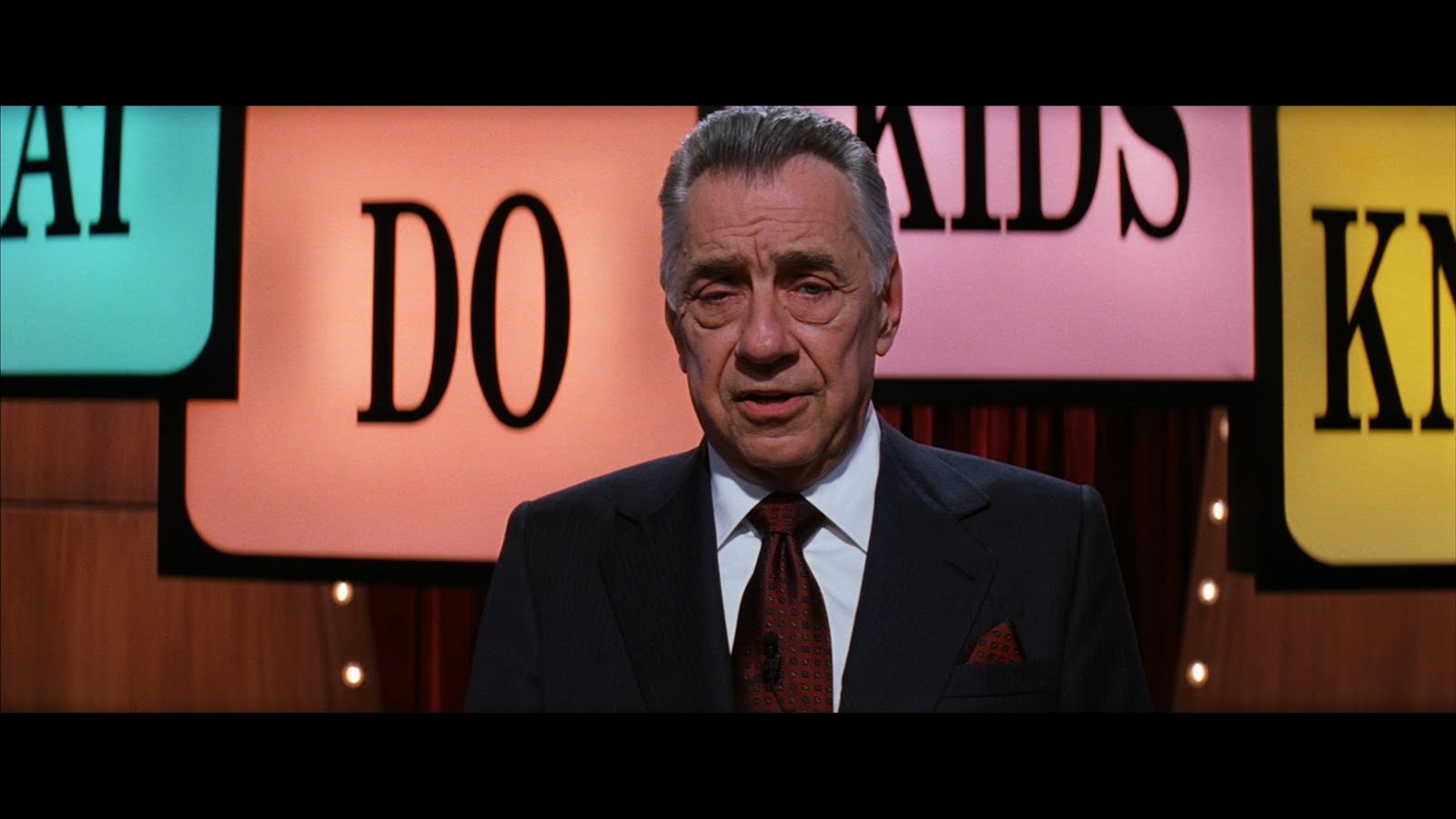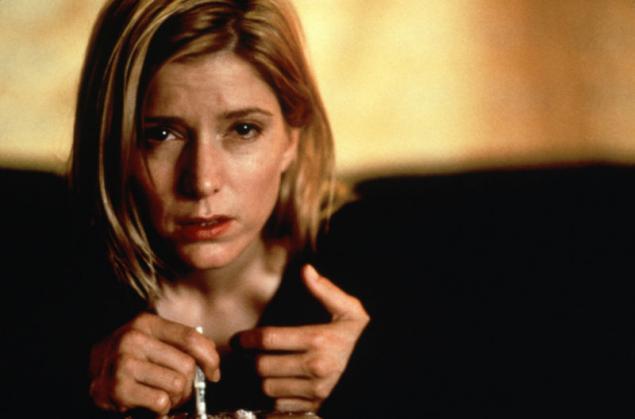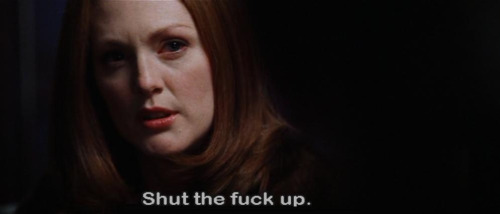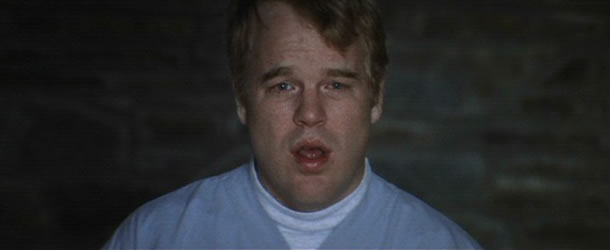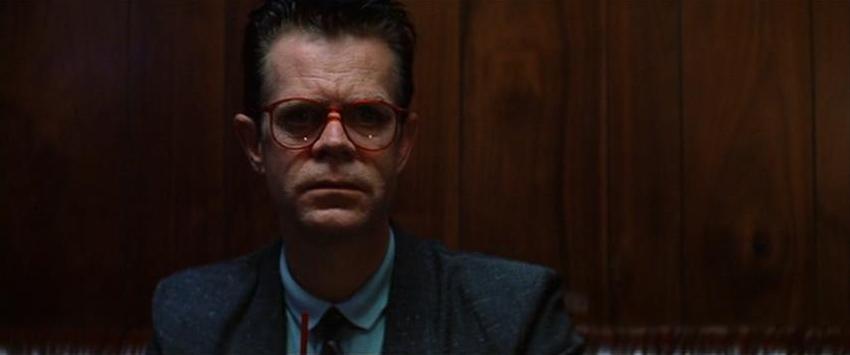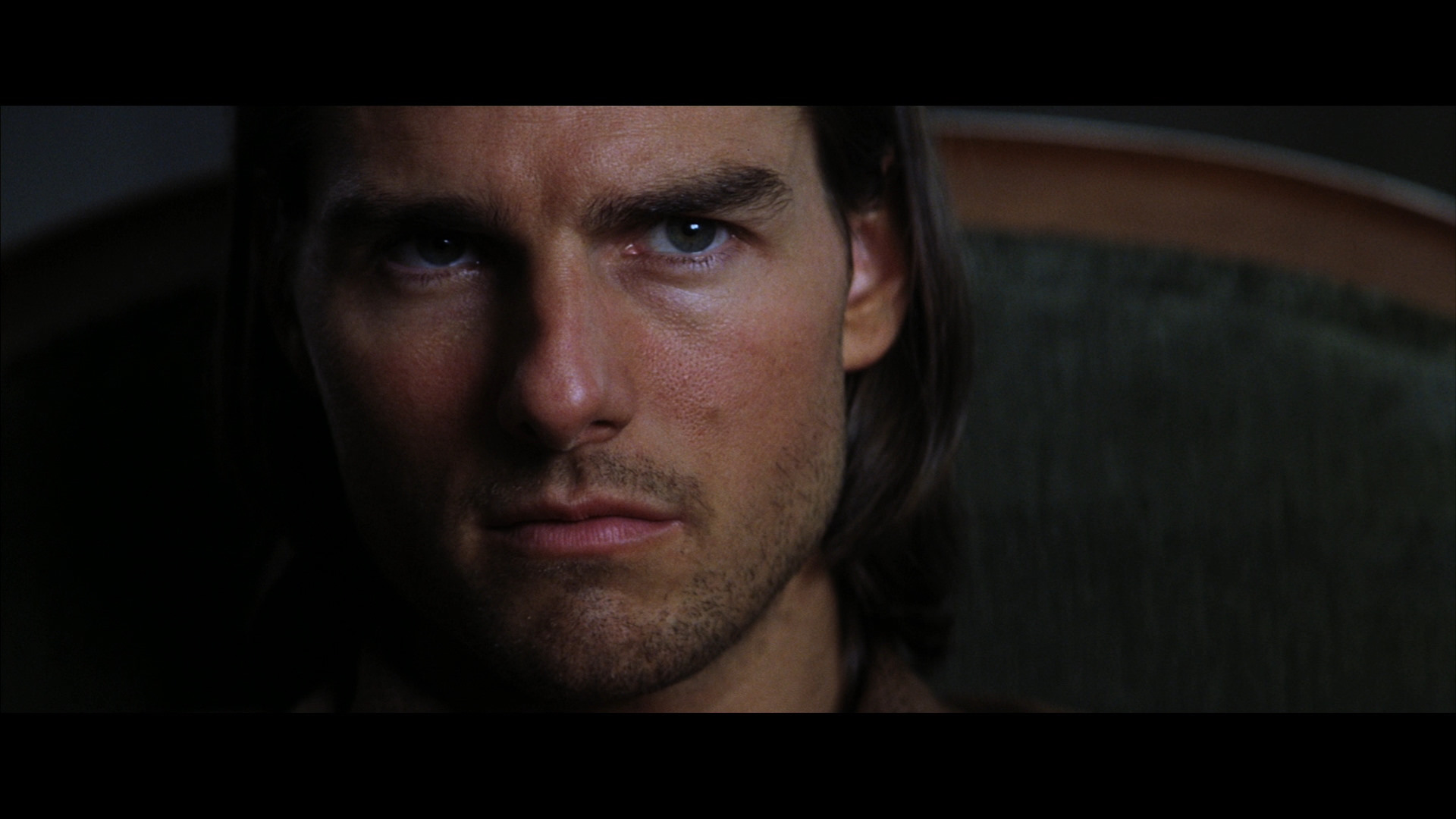magnolia
Magnolia (1999). Directed by Paul Thomas Anderson; with Jeremy Blackman, Tom Cruise, Melinda Dillon, Philip Baker Hall, Philip Seymour Hoffman, William H. Macy, Julianne Moore, John C. Reilly, Jason Robards, Melora Walters. PT Anderson (There Will Be Blood, Punch Drunk Love, The Master, Inherent Vice)’s follow-up to the audacious Boogie Nights is about one tough day in the interrelated lives of several people in modern-day Los Angeles. Earl Partridge (Robards) is dying; his young wife Linda (Moore) can’t handle it; his estranged son Frank (Cruise) runs a business that trains men how to take advantage of women; nurse Phil (Hoffman) witnesses Earl’s last day; Earl’s television company produces a kid-quiz show where prodigy Stanley (Jeremy Blackman) struggles to fend off pressure from his ambitious father; Donnie, an exploited wiz-kid from the past (Macy), searches for his place in the adult world; Quiz show host Jimmy Gator (Hall) battles health problems and his cocaine-addicted daughter Claudia (Walters) who despises him; and Jim (Reilly) is a lonely cop searching for something real. Anderson, who wrote as well as directed, constructed his story and characters around the content-rich songs of Aimee Mann, whose music is the source of the characters’ predicaments. Anderson matches inspired camera work, editing, and unexpected staging of the war and peace in human relations to explore the notion that “we may be through with the past, but the past is not through with us.”
Magnolia sets us up nicely for the turn to other media. This is a film about television, infomercials, sex seminars, game shows, advertising, electronics stores, bar songs, dirty magazines, opera, journalism, rappers, art, voicemails, blaring screens, goldiggers, studio audiences, with music playing an integral and surprisingly big role. One useful challenge for this viewing is to heighten the “second” cinematic sense of sound, to consciously will yourself to notice as many aural elements as you can. I want you to specifically de-emphasize the visual aspects of the film and emphasize sound as you view Magnolia. This will require a conscious and probably consistent effort. If you are to be successful, you may need to catch yourself from sipping back into a primarily “visual mode.” Where you typically make note of camera techniques and specific choices concerning specific shots, note everything you can about sound in the film you are about to see. So refer back to the Film Experience chapter on cinematic sound, and keep your ears peeled for the following general issues:
1) What sounds are present in music (score), speech (dialog), and noise (sound effects)? Name as many as you can. Are they used separately or in combination? To what effect?
2) Where does loudness vary and to what end? Can you note any strong examples of timbre and pitch?
3) Where and how does sound guide or manipulate your manner?
4) Where does sound startle you? Why?
5) Pay attention to the source of the sound. Is the sound diegetic or non-diegetic? Does the sound originate from on screen or offscreen? Is the sound internal or external?
6) Where does one kind of sound displace another? Where are different kinds of sound used simultaneously?
7) Exactly how does music function in the film? Is it what you expect or is it distracting? Does music ever take over a film? How does it do that? How does music set a tone or communicate story information or content?
8) Where a film’s score is often added once images are produced, the production of this film began with music. PT Anderson has said he “sat down to write an adaptation of Aimee Mann songs…Like one would adapt a book for the screen, I had the concept of adapting Aimee’s songs into a screenplay.” Pay special attention to the words of the songs on the soundtrack. How appropriate are the words to particular characters or situations? Are some songs repeated? Do individual songs apply to individual characters or are certain songs shared by characters? Why? How are musical lyrics both form and content? Is there anything unusual about how the film employs music? Anything unexpected?
9) Keep your ears open for subtle and startling perceptual properties, like loudness, pitch, and timbre. Note specific examples where such properties are dominant. Where is a correctly executed sound more startling than any image could ever be?
10) There is a lot of earnest dialog in this film and it’s fair to say that characters drive the story. Who are the “good people” and who are the “bad people”? How can you tell the difference? Is certain dialog truthful? Biased? Pain or guilt-induced? What do you consider the film’s most crucial lines of dialog?
11) During the pre-production phase of Magnolia, PT Anderson traveled to the London set of Stanley Kubrick’s Eyes Wide Shut to offer Tom Cruise the part of Jack/Frank TJ Mackey. At that meeting Anderson also met the enigmatic Kubrick, whom Anderson admired. Not only did Cruise accept the role written specifically for him, but Magnolia seems to pay something of an homage to Kubrick’s classic 2001: A Space Odyssey. This homage is cued by the famous theme from Kubrick’s picture and carried through with the images of the bed-ridden Earl (the aged Dave Bowman from 2001) and the backlit Frank (the star child) at the beginning of the “Seduce and Destroy” seminar. Note this allusion as well as how Anderson abruptly stops the allusion–with the unfurling of the seminar banner. What is the effect of this sequence and how might it relate to the movie’s larger point?
12) Record any mention or reference to the Bible. Note book, chapter, and verse. Looking up these references might be useful in attempts to explain incidents of what we might call “magical realism.” Explain strange phenomena in terms of these references and in terms of the film’s central theme.
13) What do the opening three mini-stories communicated by the “humble narrator” have to do with the rest of the film? Use these stories and the weather phenomenon near the end of the film to explain Magnolia as a whole.
14) What is this film saying about gender relations? What is a man? What is a woman? What’s a healthy relationship?
15) What is this film suggesting about television, infotainment, game shows, inspirational speakers?
16) What is this film suggesting about the relationships between parents and their children? What is it saying about children? Parents?
17) What is this film saying about celebrity?
18) What, according to the film, is the nature and role of media?
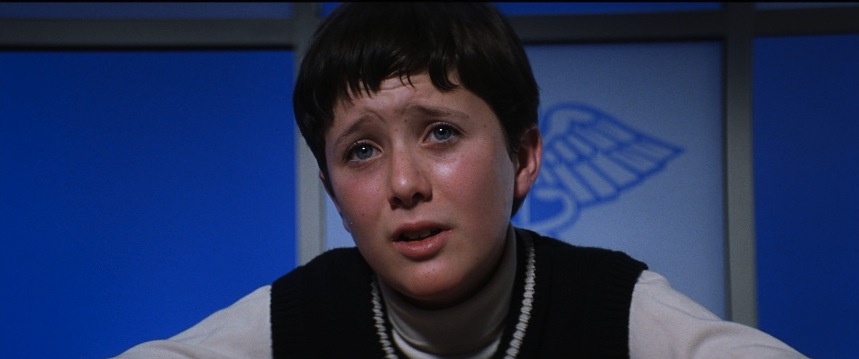
——————
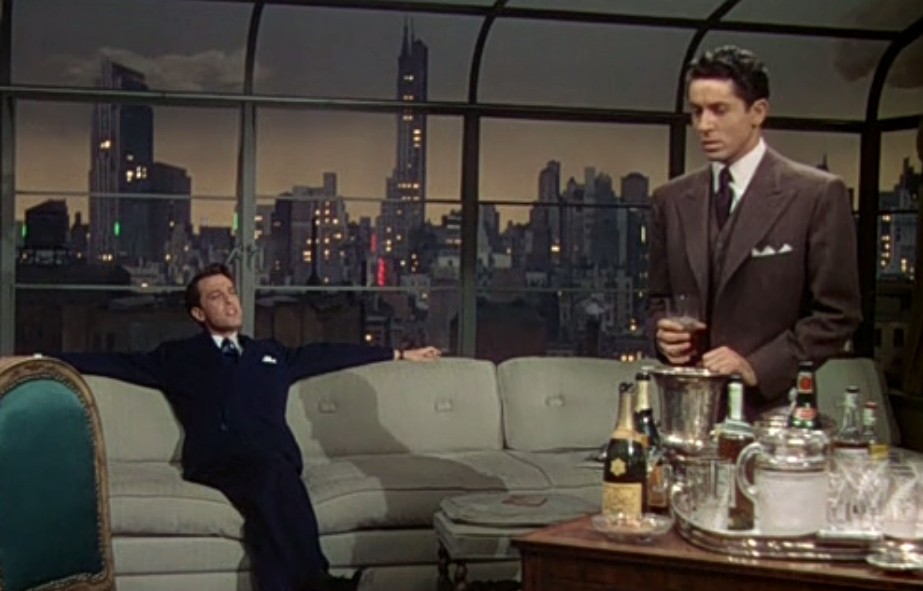
Rope (1948). Directed by Alfred Hitchcock, with James Stewart, John Dall and Farley Granger. Refined college boys Brandon and Phillip have the best of everything: an apartment with a spectacular view of the Manhattan skyline, matching tailored suits and fine champagne, the finest prep school and university (Yale) educations, and a deft social talent for throwing “unusually stimulating” dinner parties. They also possess a perverse curiosity for murder. Hitchcock experiments with the long take in this tense, pun-filled, drawing room thriller based on a play about the real-life 1924 Leopold and Loeb murder of 14 year old Bobby Franks.
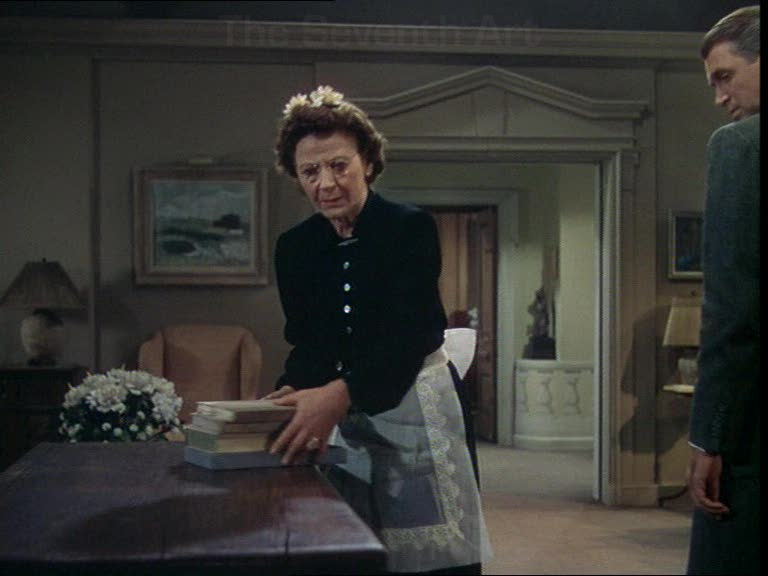
At this point in our semester of study, you should be starting to take charge of the discussion agenda–finding and asserting what is most urgent in a particular film or text. If you get to identify the topic that deserves investigation and conversation, what do you choose? Some bulleted possibilities follow. We will use this film as a central component of the upcoming midterm exam.
doubling dialog
class, privilege, power
education, intellectualism, culture
theory versus practice
props (rope, books, piano, candelabra, champagne, metronome)
editing pattern
world events
unspoken subtexts
a New York story
rope
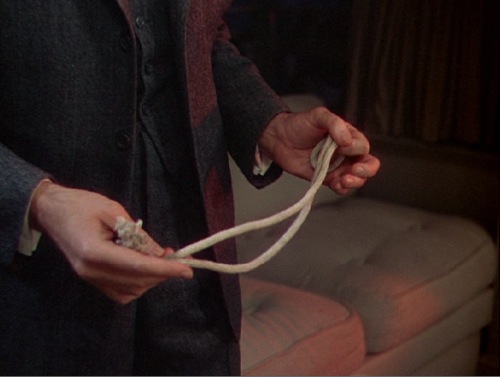
____________________________________________________________________________________________________________________________________________________
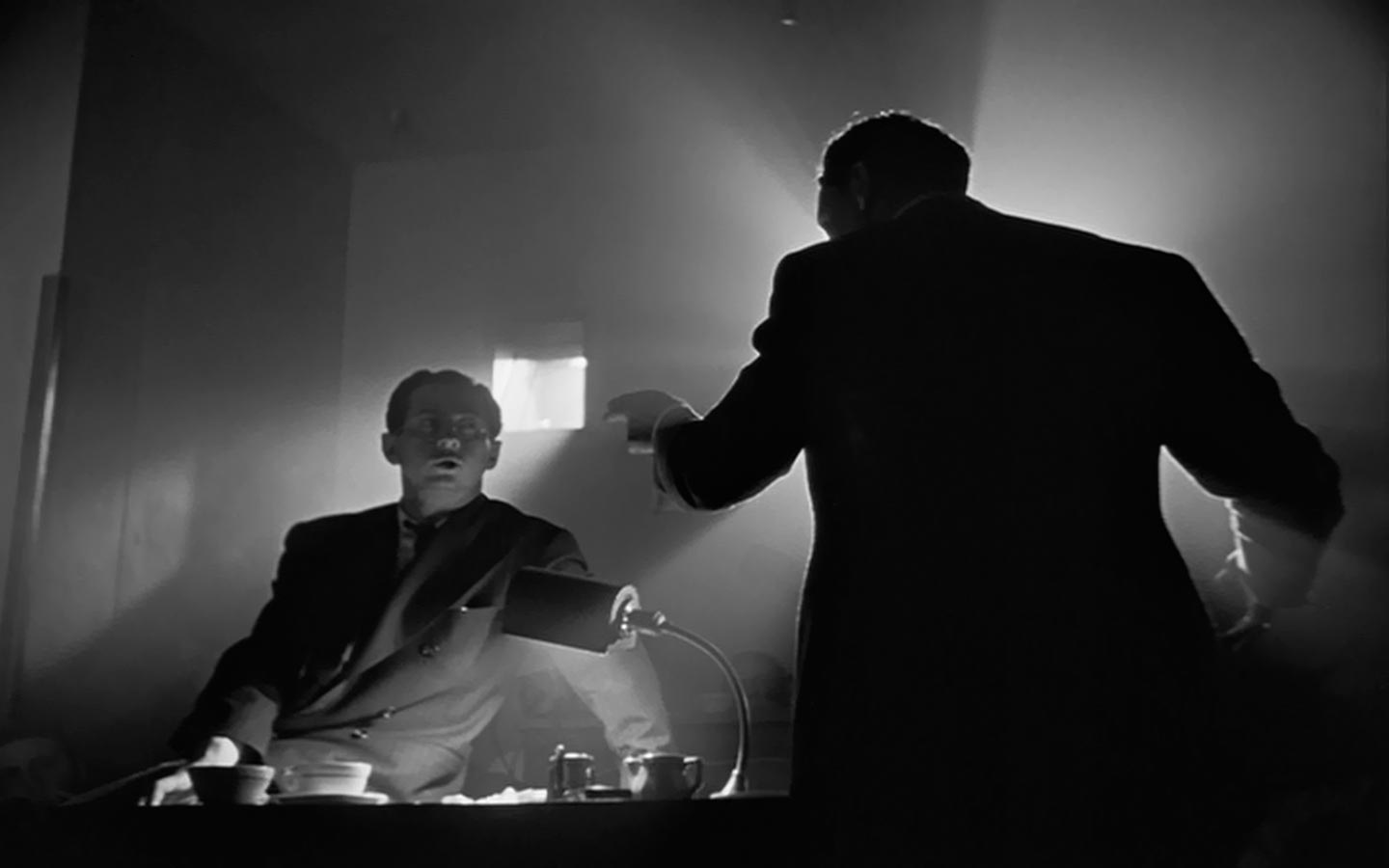
Citizen Kane (1941). Directed by and starring Orson Welles. Considered by numerous critics to be the best film yet made in America, this is the story of a reporter’s search to uncover the truth about the dying words of newspaper tycoon Charles Foster Kane (a character based on the “yellow journalist” and eccentric, William Randolph Hearst). Welles’s debut (as director, producer, actor, and co-writer) shatters narrative conventions by beginning with the end of Kane’s life, then telling the story via a jigsaw puzzle of flashbacks from various characters. Also notable and striking for the time is Welles’s use of unusual camera angles, long takes that resist established editing standards, and deep focus shots designed to retain sharpness of image in the fore-, middle-, and background of a shot. Stunning when they first appeared (and challenging for a 1940’s audience to accept), a number of the techniques used in this film are commonplace today.
Consider:
1. Narrative. Citizen Kane can be thought of as breaking new ground on at least two fronts–in its narrative structure and in its formal style. The narrative structure is innovative because Welles tells the story of a man’s life by first beginning at the end of that life, and then by having the memories of people who knew Kane suggest information that fills in the progression of his life. Pieces of the larger story are assembled via Thompson, the reporter, who seeks to discover the meaning of Kane’s last words and, by so doing, uncover the essence of the man. Note how the story is constructed, how it unfolds. It’s very different than a chronological progression of events like that used in a film like, say, Children of Men. If you can see the difference, ask yourself what’s the point? Why, specifically, do you suppose Welles chose to tell the story in this way? What does it add or detract? How do you respond? What might varied audience reactions to such choices suggest about audience expectations?
2. The second of Citizen Kane’s innovations involves its formal style. We might, for instance, say a great deal about the use of sound and lighting in this film: overlapping dialog and detailed ambient sound are crucial. We could begin close investigation of the score: Bernard Herrmann did the music for Kane and went on to work a lot with Alfred Hitchcock. Or, we could look for visual evidence—Welles was profoundly impressed with German Expressionist set design and lighting, and he had deep personal roots in theater and radio.
For starters, we’ll concentrate on the image and what might be unique about the cinematography and editing in Citizen Kane. You should break your observation of these properties into 3 categories:
a) camera angles, b) deep focus, and c) the long take
a) This film is full of pronounced camera angles. If the common height for a camera is 5 to 6 feet off the ground, note how many times Welles chooses something different from the norm. Look, for instance, for pronounced low-angle shots. See, for example, the scene between Kane and Leland after the election. Where is the camera? What is the effect? Note how the camera angle changes throughout the relationship of Kane and Susan. Why? Who does the camera look down upon and who does the camera look up to? Why? Is the frame level or canted?
b) Welles repeatedly employs a deep focus technique throughout the film (Cinematographer Gregg Toland was largely responsible for bringing this look to Kane). This technique is in contrast to the shallow focus technique that emphasized only one plane of the image (generally the plane of action). Citizen Kane contains scene after scene using deep focus, a look that insures multiple planes (near, middle, and distant) will all be in equally sharp focus. Note the scene where Kane finds his wife unconscious, with a bottle in the extreme foreground, or the party scene at the newspaper where men in the near and background alike are all in sharp focus. This layered effect invites the eye to participate more actively than the shallow focus that determines what the eye will deem important and where its focus will settle. This typically leads to more free will and more ambiguity (and with some audience members, frustration or disinterest). In Kane, what do your eyes settle on and what do you take from such a scene intellectually?
c) The long take is related to deep focus in that it, too, seeks to preserve the continuity of dramatic space and time. Before Alfonso Cuaron (who uses the long take to such powerful ends in Children of Men) was even born, Welles was resisting the typical style that seeks to build emotion and advance the story through cuts, and instead employed a number of extremely long takes where the action unfolds and the story is told without a break in the shot. Think, for instance, of the boarding house scene early in the film. This part of the story is mostly accomplished through two long takes, even though the action involves four people, interior and exterior shots, and a significant dramatic turn that will set up much of what is to come (as far as young Charles is concerned). What does such a stylistic choice add to the film? How do your eyes respond? How might the long take be the perfect tool for a particular scene, bias, or ideology? Where is the long take the last choice you would make?
Besides these questions, begin to assemble a reading of the character of Charles Foster Kane. What is his internal story? What motivates him? How does he end up where he does and why?
AND, what is the nature of the media for which Kane becomes an innovator? What is the media story that is told here? Is it important? Admirable? Is is a cautionary tale? Howso?
Finally, which are the most memorable scenes that address either CK’s 1) stylistic innovation, 2) Kan’e character and story, and 3) media and attached issues.
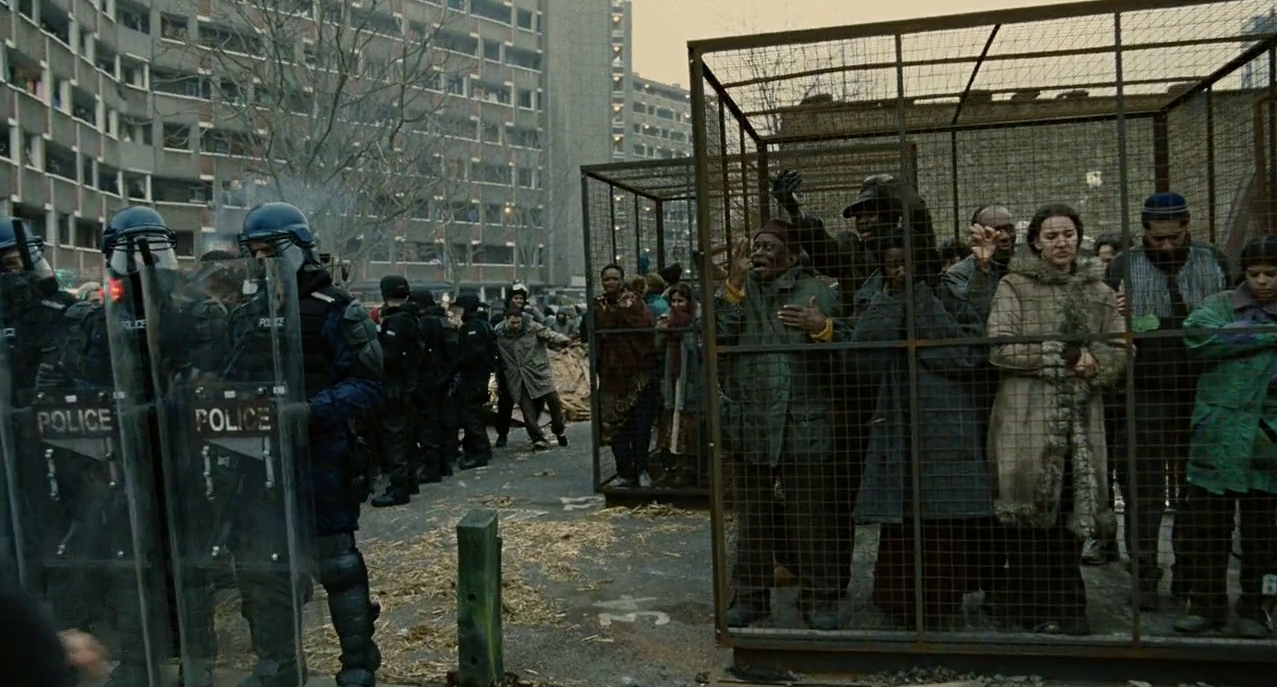
Children of Men (Alfonso Cuaron, 2006)
Some of my notes from the screening:
Begins with rapid fire new broadcast over black
All the anti immigration signs AND infertility
The world has collapsed—only Britain soldiers on.
Yiddish slur
Montage at Jasper’s house
Quietus and feet shot, animals like Theo
Luke: You’re under the jurisdiction of the fishes now; the fishes are at war with the british government until they recognize the rights of every immigrant in Britain.
Fishes and Foogies
Newspapers occlude sight in the holding pen
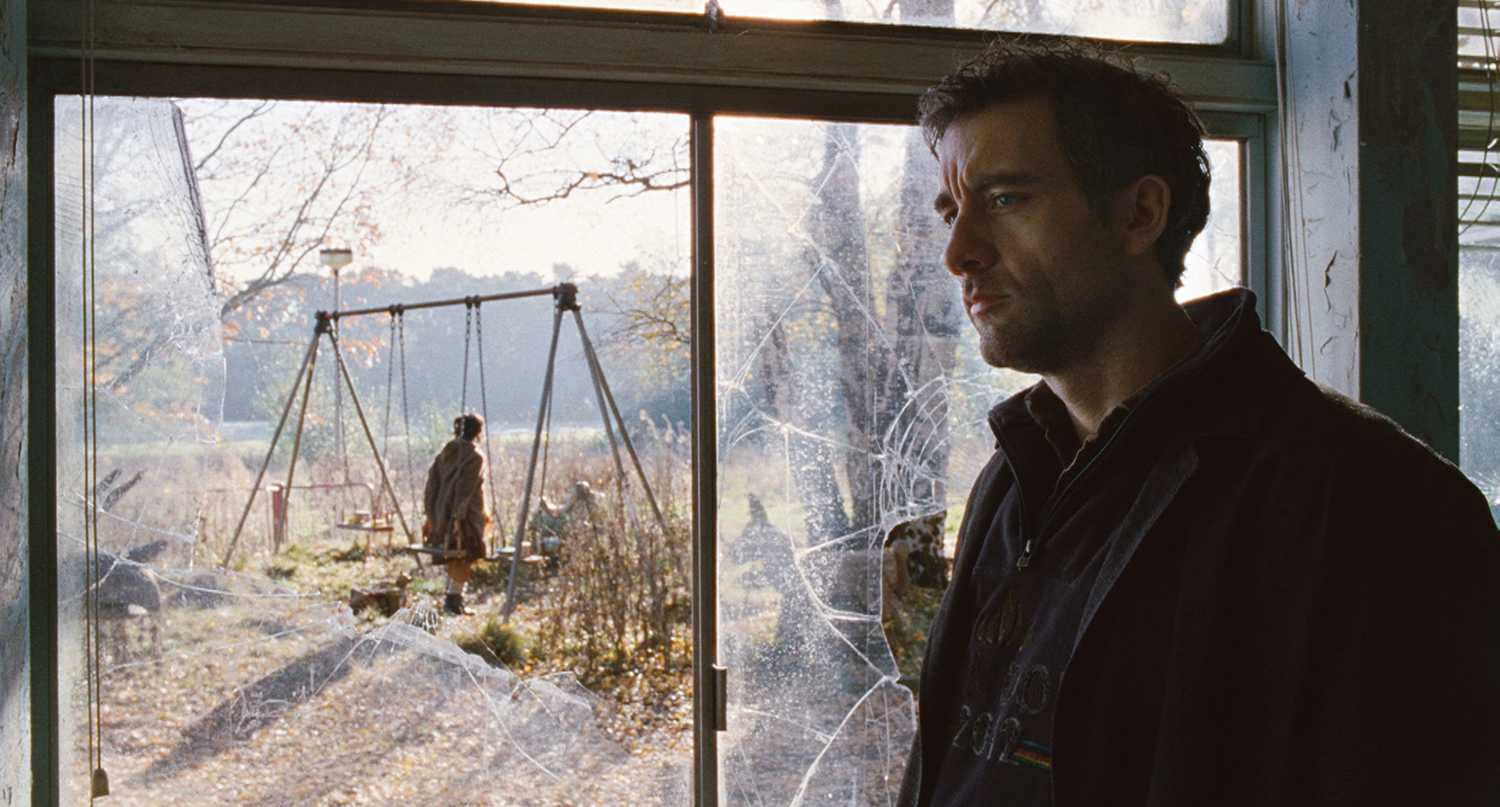
A world of screens
Whitewashing graffiti
Were your parents in new york when it happened? Smoking, its not working. Limited information treats us as adults, puts us in a world of detail.
St James park, through admiralty arch then monarchy clip clops
Zebra and old brass band
Kid video game cyborg
Art/Ark of the Arts/Guernica
Motif of feet, theo, julians, dead cops
Security cameras, evidence to find the terrorists
Crucial information exists in the background
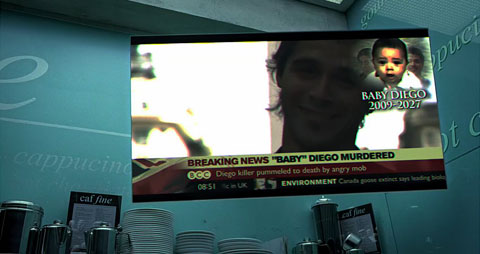
Constant use of the long take
The baby as political flag
“Right—then the government will say we were wrong—foogies are people too. Posh English lady. A wanted illegal immigrant.”
Infertility as a metaphor
Quietus as an important prop, becomes a motif
Music from a distinct era
Engaging 3 distinct historical moments—2027 (setting of the film); 2006 (when the film is made); the 1960’s/70s (Jasper, music, activism).
Illegal immigration, migration
Miriam, “It’s very odd, what happens in a world without children’s voices.”
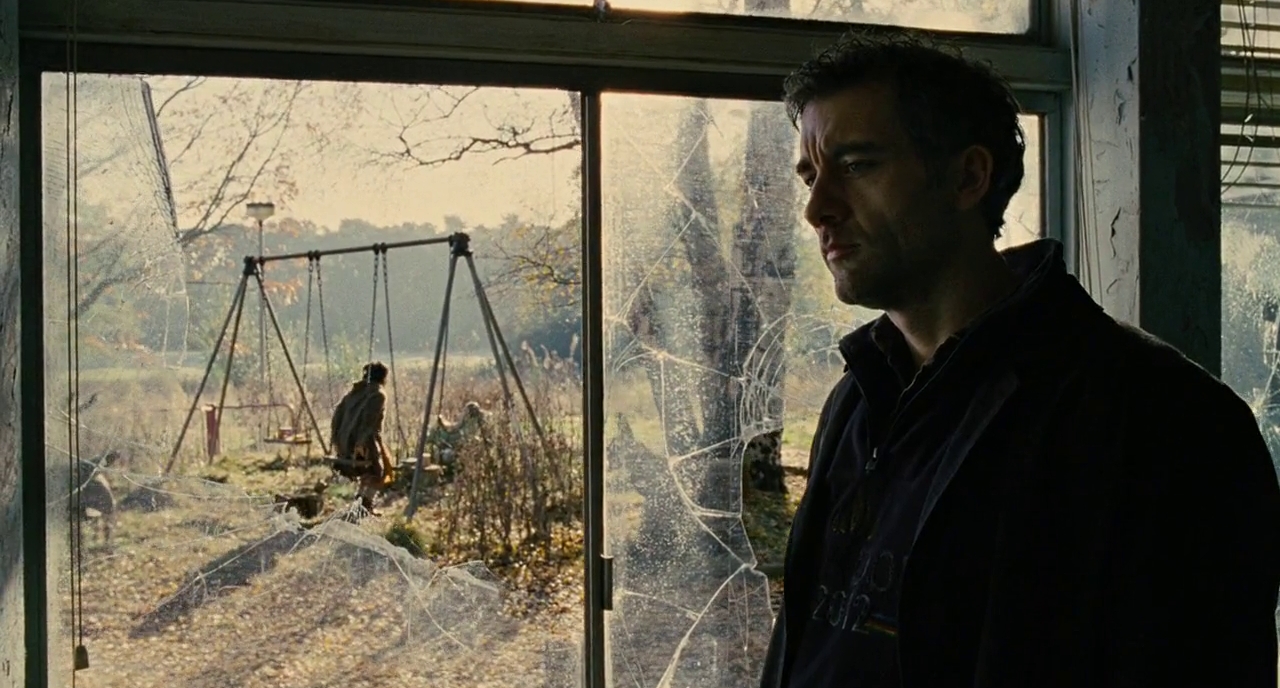
Bexhill and Abu Ghraib
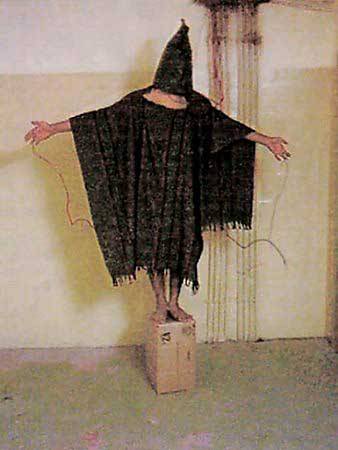
“Homeland Security” sign
Power of women, nurturing
Fascism
Violence, Theo never picks up a gun
We need a boat drawing
Almost cave paintings, a grotto with the boat.
Boat birth canal
A boat named “Tomorrow,” hope
Theo’s journey from cynicism back to optimism, activism
Sacrifice: Jasper, Miriam, Malika, Theo, Julian, others
~~~~~~~~~~~~~~~~~~~~~~~~~~~~~~~~~~~~~~~~~
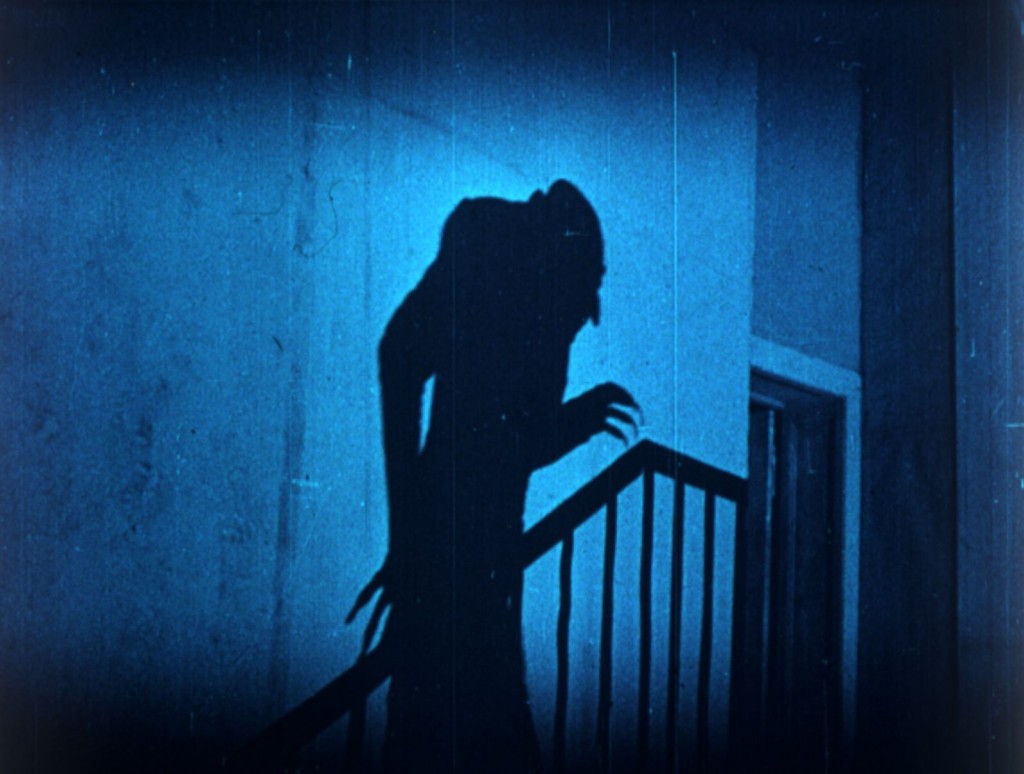
Nosferatu: A Symphony of Horror (F.W. Murnau, 1922)
Nosferatu (1922). Directed by F. W. Murnau; with Max Shreck as Count Orlock An adaptation of Bram Stoker’s novel Dracula (1897), this is the original vampire film. Murnau’s landmark German Expressionist version and the novel from which it comes have been copied and remade, referenced and paid homage to by directors as diverse as John Badham, Werner Herzog, and Francis Ford Coppola in his Bram Stoker’s Dracula (1992). The names of characters and places in Murnau’s film have been changed from Stoker’s novel (Orlock instead of Dracula), but the story outline is fairly intact: Hutter, a young real estate agent, journeys from his home in Wisborg to the Carpathian Mountains to close a business deal with the reclusive Count Orlock. He soon finds himself terrorized by Orlock, a rodent-faced, skeletal vampire. Carrying contagion and rats as he passes, Orlock journeys to Wisborg–now strangely gripped by the plague–and looks to prey on Hutter’s “pure of heart” love Ellen.

Consider the following issues/questions as possible ways into your post. We are starting to take in and practice our ability to speak the language of film, so your object here is to engage the film as a cinematic text via its formal properties. Strive to include observations about such things as camera, mise-en-scene, editing, and sound.
1. This is our second silent film (it appeared 4 years before The General, and in Germany, not America).. A lot is communicated without a word of language. How is such meaning achieved here? Expressions? Gestures? Eye movement? Posture? What about camera placement or the shot itself (Close-up, etc) or the relation of the character to other objects in the scene? Try to identify the silent communication strategies used in Nosferatu. Even if this weren’t a silent film, Orlock doesn’t seem like he’d have or need to say anything.
2. Narrative. How is the story actually told? From whose perspective do we see things? Note the various ways information is conveyed and the sources from which they originate. There are at least two kinds of title cards explaining the action–what’s the difference? The motif of reading is important in the film. We receive a lot of information via newspapers, town proclamations, books, a ship’s log, and letters. Does this complicate the narrative or clarify it? What are the alternating color tints, when are they used, and how do they advance the story?
3. German Expressionism. This film (like The Cabinet of Dr. Caligari and Metropolis) is heavily dependent on mise-en-scene (the theatrical elements within the frame–lighting, sets, props, costumes, etc.). How does the mise-en-scene graphically express the situation? If shapes (including shadows) are often distorted or exaggerated, why the distortion? How does the location filming of Nosferatu add to the story and feel of the film? What about make-up and the movements of the actors? How do any of these contribute to the story being told? Note the low-angle shot of Orlock standing atop the ship as the “new captain” amid the lines of the ship’s ropes. How might distortions not only add to the story but comment on the time and place the film was made?
4. Special Effects Techniques. Look for instances of dissolve or double exposure, iris-in/iris-out, and time-lapse photography. When do these occur and to what purpose? Is the use of certain special effects a gimmick or more than a gimmick? In what sense are they appropriate for the subject matter? To appreciate these techniques, try to imagine seeing this film 93 years ago, when film was new.
5. You might also track the use of media or the preoccupation with disease/contagion in the film. Besides the forms of communication mentioned above for Nosferatu, the film is steeped in notions of the plague, rats, flies, weakening illnesses, and, as in most vampire stories, the unspoken fear/desire of sex.

6. The Supernatural. In what ways does the filmmaker sell the notion that Orlock is a supernatural being? What editing choices or other filmic moves support this?
7. Memorable shots. If you were to sketch an important or memorable shot from the film, what would you sketch? What makes the shot memorable and worth reflection?
8. Sexuality. Argue for or against sex as the heart of the film. If the film is not about sexual desire, what is it about (assuming it’s about something more than thrills)?
______________________________
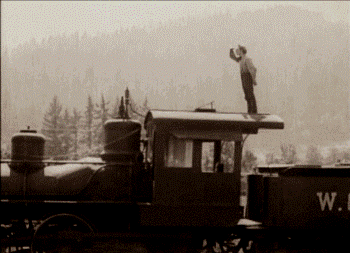
The General (Buster Keaton, 1926)
The General (1926). Directed by and starring Buster Keaton. Loosely based upon an historical event during the Civil War, this is usually considered Keaton’s most ambitious and artistically successful film. Keaton plays Johnnie Gray, a loyal son of the confederacy, who loves both the beautiful Annabelle Lee and his locomotive, “The General.” Refused enlistment by the army and taken for a coward by his girl, Johnnie wages a one man war against the Union as he seeks to recover his hijacked train. Keaton’s famous sight gags (he did all his own stunts and was usually successful on the first take) include his struggles with shifting tracks, a water tower, and a troublesome canon. The film is also notable for its attention to historically accurate details, his use of full-scale sets, hundreds of costumed extras, and the special effects wonder of a train plunging from a burning bridge.
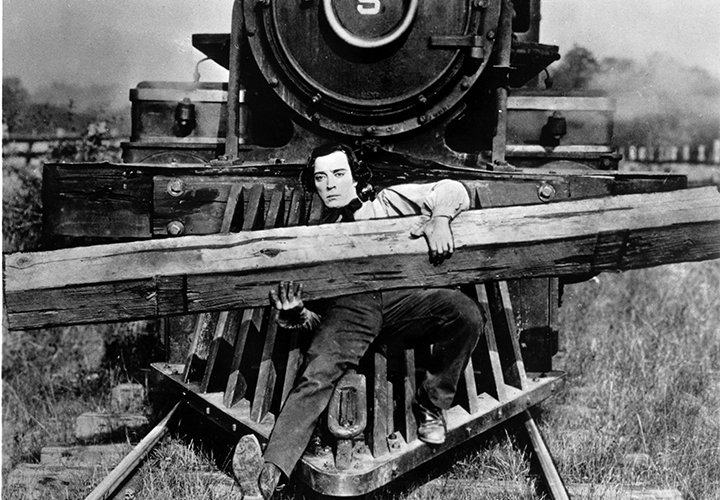
1. The narrative structure of The General follows a classical (normal, standard) pattern where the motif is a journey, where action is arguably the character, and where there are three discernible acts (like a play) to the plot: a set-up (25%), a confrontation (50%), and a resolution (25%). More than that, however, The General can be delineated into a closely balanced, even symmetrical plot structure where the pattern of gags from the first chase is reversed and reworked in the second chase later in the film, again to comic, but also different, effect. Examine the first and second train chases (separated by the film’s midpoint in the Union camp with the rescue), detailing the various gags, the order in which they occur, and the characters involved. Remember there is a set-up and a conclusion before and after the respective chases. Can you lay out a scheme for the balanced structure of the plot? What is the overall effect of the gags reprised?
2. Buster Keaton’s films are great examples of the importance of mise-en-scene. Look for noticeable uses of costumes or props or figure movement or setting. How exactly are these elements of mise-en-scene not separate or isolated but connected to the narrative? Can you identify any patterns or motifs (when a prop is used again and again it becomes a motif)? How exactly does setting and/or figure movement contribute to or even create gags? These features mark characters, but also add to the narrative structure and development. How?
3. Camera movement. In Keaton’s The General, the camera is fairly mobile for the silent era, and it is even integral to the comedic elements and overall visual style of the film. Note several of the shots where the camera is clearly enhancing the action. Describe the shots–where is the camera and what is it doing? When do such shots occur and speculate on why. What do unique camera techniques add or take away from a shot? Consider several shots from The General which also manipulate the viewers” reactions. Do they function in similar or radically different ways?
4. What details from The Storytelling Animal are useful to a reading of The General?
5. What makes this film funny? What makes it poignant? What makes it human?
Apocalypse Now (Francis Ford Coppola, 1979)
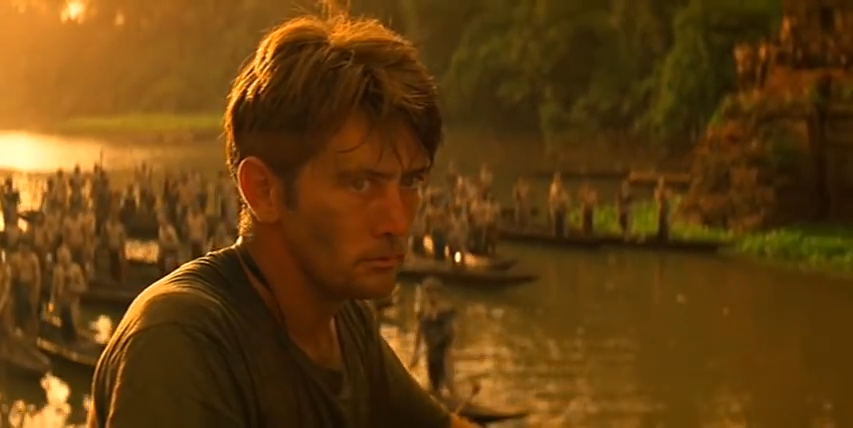
Apocalypse Now (1979). Directed by Francis Ford Coppola; with Marlon Brando, Martin Sheen, Robert Duvall, Larry Fishburne, and Dennis Hopper. An adaptation of Joseph Conrad’s novel Heart of Darkness (1902), this is widely considered one of the best war films ever made. Coppola transplants Conrad’s tale from the jungles of Africa to the jungles of Southeast Asia, and from the madness of European colonialism to the madness of Americans in the Vietnam War. Captain Willard is sent up-river into Cambodia on a secret mission to murder another American officer, Colonel Kurtz, who has apparently gone insane. Once a highly-decorated Green Beret, Kurtz has formed his own army and is suspected of committing horrendous atrocities. Willard’s mission is to terminate Colonel Kurtz’s command “with extreme prejudice.” The film won the best picture award at the 1979 Cannes Film Festival.
________________________________________________
A few things to consider:
1. Camera. Apocalypse Now is a visually stunning film. This film depends heavily on cinematography while it explores a tale of horror, fear, and whatever constitutes insanity/sanity. What are the images that haunt you and where are the crucial points and qualities of the narration?
2. Mise-en-scene. Note the changes in the appearance of the soldiers and the boat as it travels farther up-stream and gets closer to Kurtz. How do costumes, make-up, props, etc. change as the boat gets swallowed by the jungle?
3. Argument/message. What is this film saying? Note some of Willard’s major encounters–receiving the mission, the attack of the air cavalry, his reading of Kurtz’s file, the USO show, searching the natives’ boat, reaching the bridge, Kurtz’s village, and finally, the monologue of Kurtz himself –and ask what each illustrates. What do they illustrate as a whole? Who is the enemy in this film? Who is the Hero? What is this film saying about war?
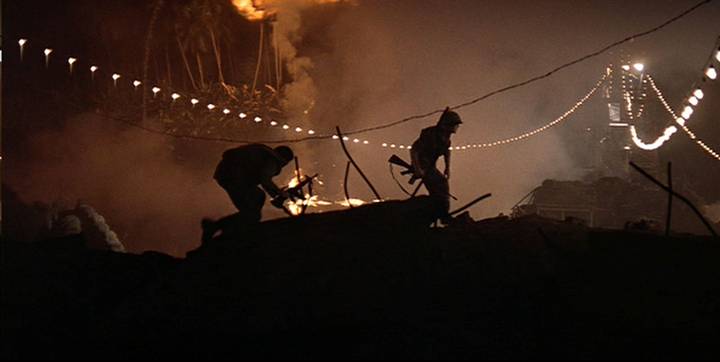
5. Narrative. What kind of story is this and how do you know? What propels the story forward and what mechanisms are employed to manage and present information? How do we get from point A to point B to point C, and are there any alterations in the chronological progression of events?
6. Additional formal elements. What else did you notice regarding the editing or sound choices made in the film?
7. Story. Do you recognize and other stories embedded in or at work in Apocalypse Now? Any familiar characters or situations you’ve seen before? Where can Jonathan Gottschall’s The Storytelling Animal be usefully connected to the film?
8. Media. What media forms or elements of media are employed or engaged in the film?


